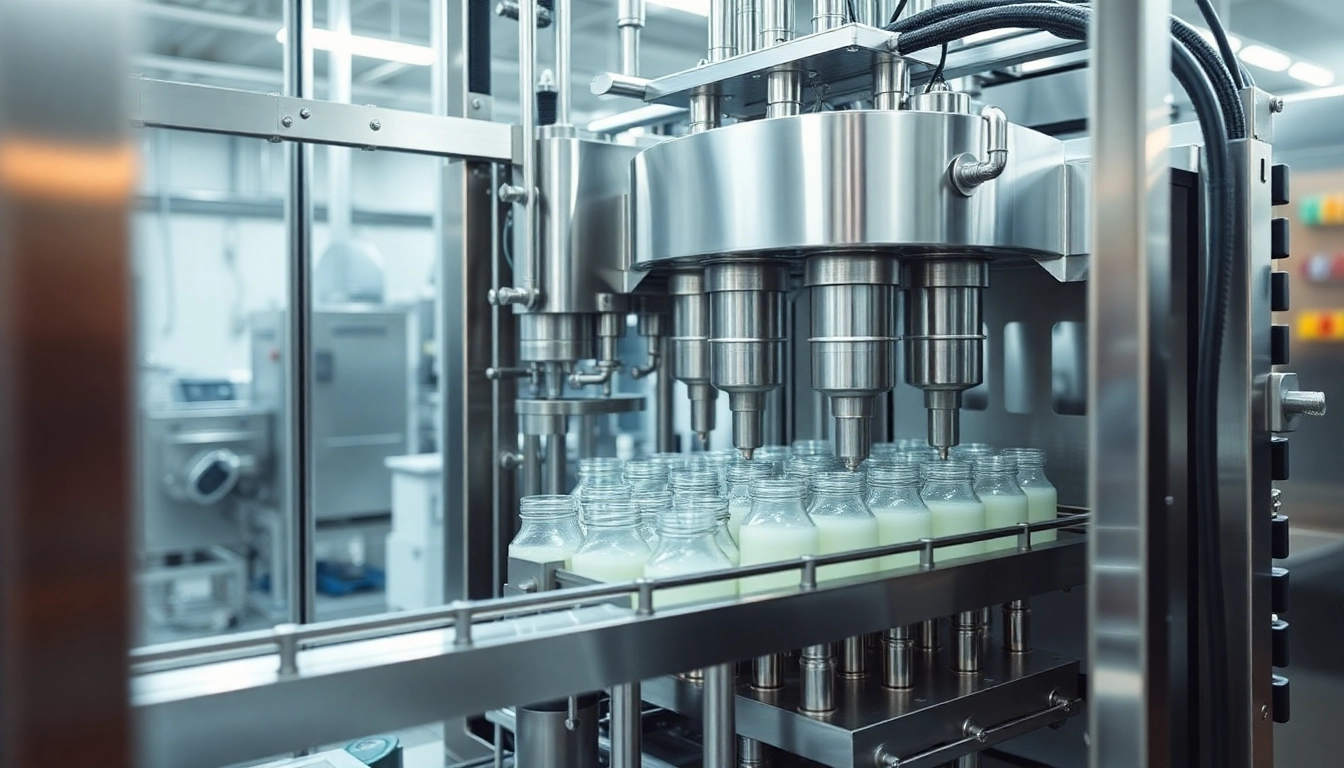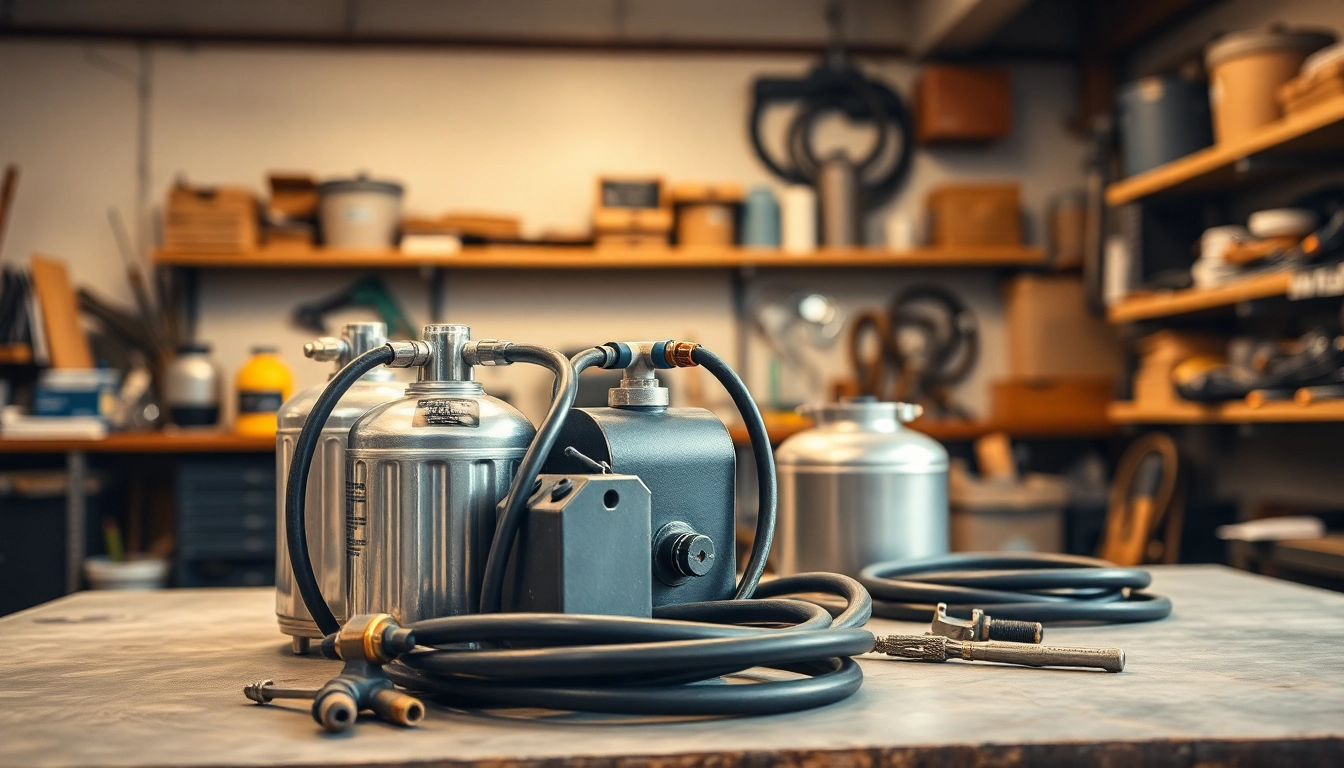Understanding Filling Machines
What is a Filling Machine?
A filling machine is a vital piece of equipment used in various industries, including food and beverage, pharmaceuticals, cosmetics, and chemicals. Its primary function is to dispense a specific volume of liquid, paste, or powder into containers, ensuring consistency, precision, and efficiency in production operations. As automation continues to advance, modern filling machines also incorporate advanced controls, allowing for even greater accuracy and speed in production lines. Companies seeking Filling Machines can select from an array of options catered to their specific needs, from simple manual devices to fully automated systems.
Types of Filling Machines Available
Filling machines can be categorized based on their operational mechanisms and the type of product they handle. Here are some of the most common types:
- Volumetric Filling Machines: These machines fill containers based on a predetermined volume. They are widely used for liquids like juices, oils, and sauces.
- Piston Filling Machines: Ideal for thicker products, these machines utilize a piston to measure and dispense the fill amount, making them suitable for products such as creams and pastes.
- Gravity Filling Machines: Leveraging gravity, these machines allow liquid products to flow from a supply tank into the container. They’re primarily used for low-viscosity liquids.
- Pump Filling Machines: These machines use different types of pumps to move fluids into containers, offering versatility in handling varying product viscosities, including syrups and sauces.
- Vacuum Filling Machines: Ideal for filling jars or bottles with products that can foam or create bubbles, the vacuum process prevents air from being introduced during filling.
- Net Weight Filling Machines: These systems weigh the product as it is dispensed to ensure that only the correct amount is filled into the container.
- Automatic vs. Semi-Automatic Filling Machines: Automatic machines are designed for high-volume production with minimal human intervention, while semi-automatic machines require some manual input.
Key Components of a Filling Machine
Understanding the components of a filling machine is vital for anyone looking to purchase or operate one. Key elements include:
- Filling Mechanism: The core element that determines how the product is filled; it could be volumetric, gravimetric, or by other means.
- Container Holding System: This system secures the container in place, which could be through mechanical clamps or sensors for automatic systems.
- Control Panel: Most modern machines come with a digital interface that allows operators to adjust parameters like fill volume and speed.
- Pumps or Valves: These components are necessary for moving liquids or pastes through the filling system, critical in maintaining flow and speed.
- Transport Mechanism: This component includes conveyor belts or other systems that move containers from the filling station to subsequent processing steps.
- Sensors and Feedback Systems: These systems help monitor the filling process, providing real-time data to minimize errors and maintain quality.
Choosing the Right Filling Machine for Your Business
Assessment of Production Needs
Before selecting a filling machine, it is essential to assess your production needs thoroughly. Consider the following factors:
- Product Type: Determine whether you are filling liquids, powders, creams, or granulated substances, as different products may require specific filling technologies.
- Container Size and Material: Assess the various sizes and materials of containers you intend to use, as this will impact the choice of machine.
- Production Volume: Analyze daily production targets; high-volume operations may necessitate automatic machines, while lower volumes might be more suited to semi-automatic setups.
- Production Environment: Depending on the cleanliness and safety regulatory requirements of your industry, machines may need to meet specific standards.
- Scalability: Choose a machine that can adapt to your future growth, allowing for potential upgrades or expansions.
Evaluating Machine Features and Capabilities
Once you understand your production needs, it’s time to evaluate the features and capabilities of various filling machines:
- Speed and Efficiency: Look for machines that can operate at the speed required for your production goals, ensuring minimal downtime and maximizing throughput.
- Accuracy and Consistency: Choose machines known for precision in filling to maintain quality and minimize waste.
- Automation Features: Assess the level of automation available — fully automated systems can significantly reduce labor costs over time.
- Ease of Use: Opt for machines with intuitive controls, enabling quick operator training and seamless operation.
- Maintenance Requirements: Consider the ease of maintenance as machines that require less frequent attention can save time and costs in the long run.
- Adaptability: Find machines capable of adjusting to different product types or packaging sizes with minimal changeover times.
Cost Considerations and Budgeting
Cost is a crucial factor when selecting a filling machine. Evaluate the following:
- Initial Investment: Calculate the upfront cost of purchasing the machine, but don’t forget to account for installation and testing expenses.
- Operational Costs: Consider the ongoing costs of operation, including energy consumption, staffing, and maintenance.
- Potential ROI: Estimate how long it will take to recoup your investment based on increased production efficiency and reduced labor costs.
- Financing Options: Explore financing options or leasing agreements that may make it easier to manage your budget while acquiring quality equipment.
- Long-term Value: Invest in machines with a proven track record for reliability and longevity to avoid the need for frequent replacements.
Operating a Filling Machine Effectively
Best Practices for Setup and Calibration
Proper setup and calibration of your filling machine are crucial for optimal performance:
- Follow Manufacturer Guidelines: Always adhere to the specific setup instructions provided by the manufacturer to ensure proper function.
- Calibrate for Accuracy: Regularly calibrate the machine to ensure accurate fill volumes, especially when switching between different products.
- Use High-Quality Materials: Ensure that all components in contact with the products, including hoses and nozzles, are of high quality to prevent contamination.
- Conduct Dry Runs: Perform dry runs without product to test the system’s efficiency and check for proper operation before going live.
- Document Setup Procedures: Keep detailed records of the setup process to allow for consistent operation and training.
Training Operators for Maximum Efficiency
Operator training is essential for maximizing the efficiency of your filling machine:
- Comprehensive Training: Ensure operators understand both the technical and mechanical aspects of the machine to troubleshoot effectively.
- Focus on Safety: Train operators on safety protocols to prevent accidents and ensure compliance with industry regulations.
- Hands-On Experience: Provide practical training scenarios to familiarize operators with various situations they may encounter during operations.
- Ongoing Training: Regularly update training programs to incorporate new technologies and best practices as they become available.
- Feedback Mechanisms: Encourage operators to provide feedback on the machine’s performance to identify areas for improvement.
Maintenance and Troubleshooting Tips
Regular maintenance and quick troubleshooting can prevent costly downtime:
- Scheduled Maintenance: Implement a proactive maintenance schedule based on manufacturer recommendations, focusing on key components such as pumps, sensors, and seals.
- Common Issues Checklist: Maintain a checklist for common issues such as leaks, jams, or fluctuations in fill volume to facilitate swift resolutions.
- Keep Spare Parts On-Hand: Stock essential spare parts to minimize downtime during repairs and maintenance operations.
- Use Monitoring Tools: Employ data logging and monitoring tools to keep track of machine performance and trigger maintenance interventions as needed.
- Document Repairs: Keep a log of all repairs and maintenance efforts to track performance and identify recurring issues.
Benefits of Upgrading Your Filling Machine
Increased Production Efficiency
Upgrading to a modern filling machine can significantly enhance production efficiency:
- Faster Filling Speeds: Newer machines can operate at higher speeds, allowing for more products to be filled in a shorter time frame.
- Reduced Downtime: Advanced technology results in fewer breakdowns and maintenance needs, thereby reducing overall downtime.
- Multi-Product Capability: Modern machines can often handle multiple product types, reducing the need for additional machines.
- Integration with Other Systems: New machines are often designed to integrate seamlessly with existing packaging and production lines, optimizing workflow.
Improved Product Quality and Consistency
Investing in new filling technology directly correlates with product quality:
- Enhanced Accuracy: Modern filling machines come equipped with precision technology, ensuring consistent fill volumes across production runs.
- Reduced Product Waste: More accurate filling minimizes spillage or overflow, leading to cost savings in materials.
- Improved Cleanliness: Many new models feature better hygiene standards, suitable for high-quality product standards.
- Advanced Quality Control Measures: Some machines include immediate feedback systems to alert operators of inconsistencies in fill volumes.
Enhanced Safety Features in Modern Machines
Modern filling machines often include advanced safety features that protect operators and maintain compliance:
- Emergency Stop Mechanisms: New systems are frequently equipped with readily accessible emergency stop buttons that can halt operations immediately.
- Protective Shields: Many machines come with barriers or shields to prevent operator injury during operation.
- Automated Reporting: Regular maintenance reports can be generated automatically, helping to identify risks and operational issues before they escalate.
- Ergonomic Design: Many newer models consider operator ergonomics to reduce tiredness and the risk of workplace injuries.
Future Trends in Filling Machine Technology
Automation and Smart Technologies
The future of filling machines will be heavily influenced by automation and smart technologies:
- AI and Machine Learning: These technologies can enhance machine learning capabilities for adaptive real-time adjustments based on production data.
- IoT Integration: Internet of Things (IoT) connectivity allows machines to communicate with other devices, enhancing monitoring and operational efficiency.
- Predictive Maintenance: Smart technologies can predict when breakdowns may occur, prompting maintenance before issues arise.
- Remote Monitoring: Operators can oversee multiple machines and their performance from remote locations, streamlining operations and decision-making.
Sustainable Innovations in Manufacturing
As sustainability becomes increasingly paramount, filling machine manufacturers are integrating eco-friendly practices:
- Energy-efficient Operations: Modern filling machines are being designed to minimize energy consumption, reducing their carbon footprint.
- Recyclable Materials: The push for sustainable materials means that machines are now being constructed with recyclable or sustainable materials.
- Minimized Waste: Technologies that optimize filling processes can ensure minimal waste of products and packaging materials.
- Water-and Chemical-saving Features: Innovative designs help to reduce the amount of water and cleaning agents needed for operation.
Market Demand and Industry Adaptation
Filling machine technologies must adapt to shifts in market demand and consumer preferences:
- Customization: There is a growing need for machines that can be easily adjusted for differing products and packaging types to cater to niche markets.
- Smart Packaging Solutions: As consumer focus shifts towards convenience, filling machines that can accommodate smart packaging solutions will become essential.
- Flexibility in Production: The ability to switch between product types with minimal downtime will be a significant selling point for future machines.
- Regulatory Compliance: Companies will need to ensure that machines are built to comply with evolving industry standards and regulations.



